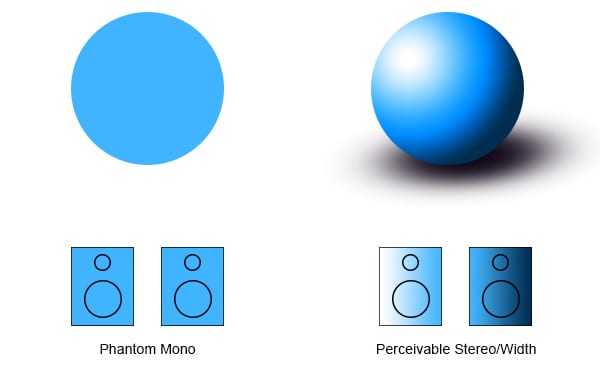LO1: Creating ‘Space’ Within My Mixes – Height
Having a variety of frequencies and dynamics in your mixes can create a lot of interest. Varying frequencies can also help make instruments distinguishable. For example, vocals might be difficult to hear if other instruments are playing within a similar frequency range to them. However, frequency can also be interpreted as height. As a result, using various frequencies within your mix could also create various ‘heights’ within your sonic space.
Some think that this could be because of the structure of most speakers, with woofers being placed below the tweeters (The Pro Audio Files, 2013). Psychoacoustics, the study of sound perception (The Power of Sound, no date), could also hold some possible answers as to why we perceive sonic frequency on a vertical scale, some being psychological and others physiological. Either way, by using a range of harmonics, I can make my mixes sound ‘tall’. To do this, I must carefully choose instruments and synthesisers that contrast with each other. If they don’t contrast enough then I can separate them via changes in EQ settings.
LO1: Creating Space Within My Mixes – Depth
Depth can be created within mixes by mirroring the ways in which depth is heard all around us. Since lower frequencies can travel further than higher frequencies, cutting off higher frequencies with an EQ plugin can help make a sound seem far. Volume can also be used to create depth as louder instruments can be perceived as being closer than quieter ones. Reverb can also be added to create echo-like effects. However, you must be very careful when using reverb as too much can cause many problems (EnvatoTuts+, 2014).
Using reverb on multiple tracks will layer the reverb effects and swamp the entire mix. It could also overwork your computers processor. Instead, it’s best to create a separate reverb track and then route your instruments into it.
References
EnvatoTuts+ (2014) How to Creatively Use Multiple Reverbs in One Mix. Available from: https://music.tutsplus.com/tutorials/how-to-creatively-use-multiple-reverbs-in-one-mix–cms-19841
The Power of Sound (no date) Psychoacoustics, defined. Available from: http://thepowerofsound.net/psychoacoustics-defined/
The Pro Audio Files (2013). How to Create Width, Height and Depth in a Mix. Available from: https://theproaudiofiles.com/width-height-depth-in-a-mix/

